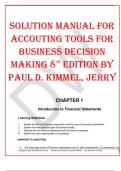College aantekeningen
Alle colleges Comparative Politics: Democratisation/ all lectures Comparative Politics: Democratisation
- Instelling
- Radboud Universiteit Nijmegen (RU)
- Boek
- Democratization
Colleges Comparative Politics: Democratisation/ all lectures Comparative Politics: Democratisation. 2021 Met deze aantekeningen heb ik een 8,5 behaald! Colleges 1 t/m 13
[Meer zien]














